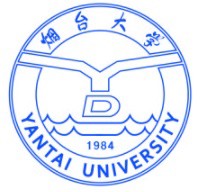Built-in electric field-assisted W-C3/X-C3 van der Waals heterogeneous single-atom catalysts for enhanced electrocatalytic nitrogen reduction
Xiaojing Liu a, Shuaishuai Gao a, Zhiwei Wang a, Yujie Sun a, Guoning Feng a, Xin Chen b, Rongjian Sa c, Qiaohong Li d, Zuju Ma a
链接:https://doi.org/10.1016/j.apsusc.2023.156790
Abstract
Electrocatalytic nitrogen reduction reaction (eNRR) is considered an alternative approach to the Haber-Bosch process for green ammonia synthesis. However, developing NRR electrocatalysts with high activity and selectivity remains a great challenge. Here, we designed a new type of van der Waals heterogeneous single-atom catalysts (vdW-SACs): W-C3/X-C3 (X = TM, Be, B, C, N, O, P, S, and Cl). By means of large-scale density functional theory (DFT) calculations, we built up the full profile of the stability, NRR activity, and selectivity of these vdW-SACs. Five structures exhibit lower overpotential for NRR than the previously reported monolayer W1C3. A volcano-shaped relationship between ΔG∗N and UL was obtained, and particularly, the W-C3/P-C3 locates right on the peak of the volcano with the highest activity. The built-in electric field induced by the asymmetric active sites (W and P) adjusts the binding strength between reactants and catalysts surface and achieves the lowest overpotential. The electronic structure analysis discloses that the high degree of pd hybridization between W 5d orbitals and N2 π* antibonding orbitals in W-C3/P-C3 promotes the activation of intermediates. These new insights may open up opportunities for exploring advanced electrocatalysts for NRR and beyond by regulating the built-in electric field of vdW-SACs.
Graphical abstract
The built-in electric field induced by the asymmetric active sites results in changes in the charge and spin moment of the upper active SAC, which further adjusts the binding strength between reactants and catalysts surface and achieves a lower overpotential.

期刊:Applied Surface Science,中科院大类一区期刊,IF=7.39
